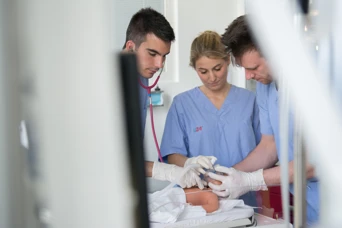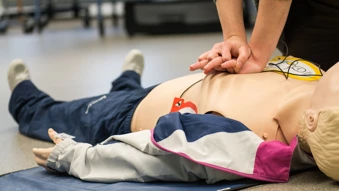Newborn Life Support
The Newborn Life Support (NLS) course provides clear, practical training in the resuscitation of babies at and immediately after birth.
The Newborn Life Support (NLS) course is designed for all healthcare workers, regardless of discipline or status, who may be called upon to resuscitate a newborn. The course combines theory, practical skills, and simulations to prepare participants to anticipate problems at birth, recognise newborns in need of help, and provide immediate, effective care.
Emphasis is placed on airway management, lung inflation and aeration, with limited but essential roles for chest compressions and drugs. Communication and teamwork are central elements throughout the training.
The NLS course equips healthcare providers with the essential skills and confidence to manage newborn resuscitation during the first critical minutes after birth.

Characteristics
Target audience: All healthcare workers
Theory: Online course via ERC CoSy
Hands-on part: 1 day (minimum 7 hours, excluding breaks)
Certificate validity: 3 years
Learned skills
Anticipate problems at birth and assess the newborn
Safe handling of resuscitation equipment
Airway management, lung inflation, and aeration
Strategies when initial lung inflation fails
Direct laryngoscopic inspection of the oropharynx
Delivery of chest compressions
Obtaining umbilical venous access
Management of newborn emergencies
Effective communication and teamwork in resuscitation
Other courses:
Basic Life Support (BLS)
Advanced Life Support (ALS)
Immediate Life Support (ILS)
Neonatal Life Support (NLS)
Basic Instructor Course (BIC)
Educator Master Class (EMC)

